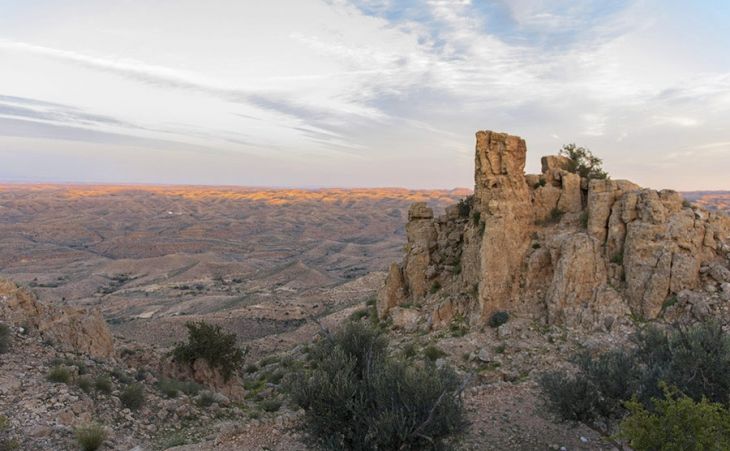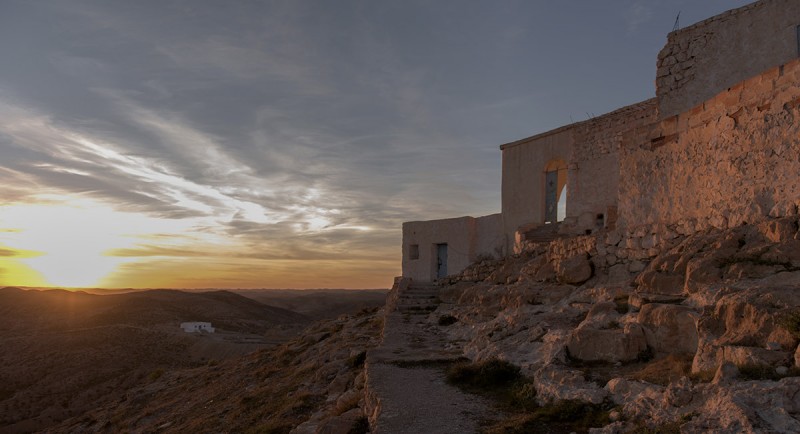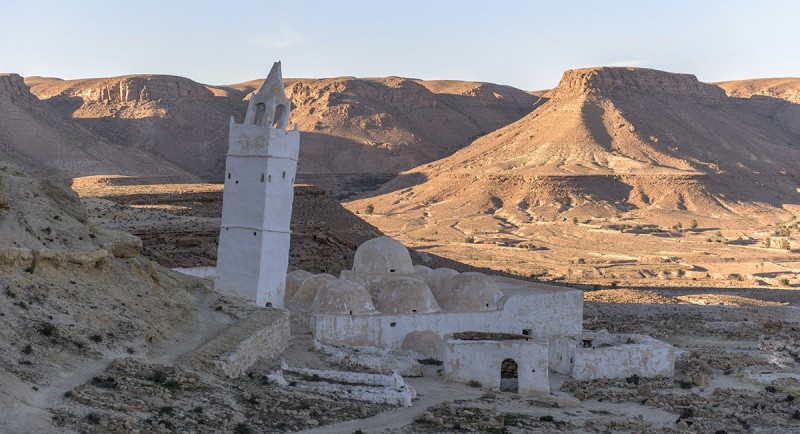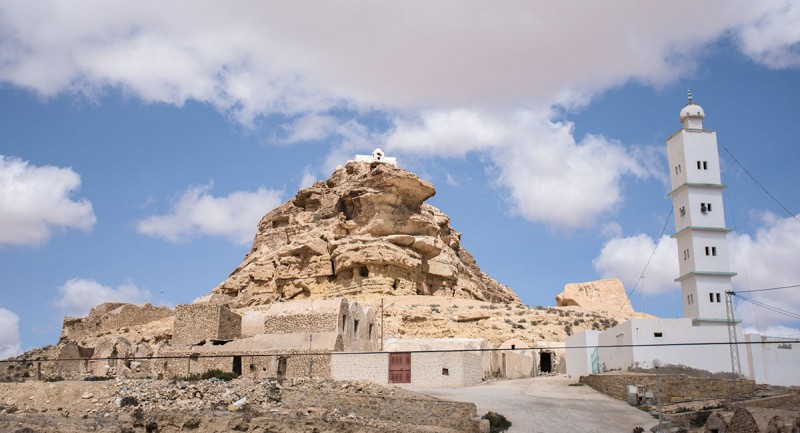Land of interaction and wide horizons, the Dahar, a mountainous region of the Tunisian South-East, is a place of fables and survival of very old beliefs. Here are a few of them.
Lella Telkwast
If you travel in the surroundings of
Matmata, people will show you, at the top of a peak, the shrine of “
Lella Telkwast” – which means “Saint Telkwast”.
This holy woman carries an amazigh name: Lella Telkwast, literally “the holy woman with divergent strabismus”.
It is believed that initially, it was the nickname of an ancient citadel from which the view stretches over… both sides of the mountain!
Even today, the shrine of Lella Telkwast offers a panoramic view of the majestic scenery of the mounts Dahar.
The Seven Sleepers of Chenini
It is said that the
giant tombs located near the village of
Chenini are those of the
Companions of the Cave mentioned in the Quran, also known as the Seven Sleepers in the Christian tradition.
As they were persecuted, they sought refuge in a cave and they woke up after a deep three-century sleep. Their bodies had got bigger.
Other sanctuaries around the Mediterranean refer to this story. The most famous is the Cave of the Seven Sleepers in Ephesus, Turkey.
The child cemetery of Guermessa
The
citadel village of
Guermessa is without a doubt one of the most spectacular sites of the region.
It is also a place with traces of original traditional practices, such as a small child cemetery.
Is this a coincidence? In ancient Carthage too, a special sanctuary was dedicated to young children’s graves. It is still a discussion between historians whether they died from natural causes or from child sacrifices, as this was a traditional practice among ancient Phoenicians.
It is true that in ancient times, Phoenicians were present on the nearby shore, and that Berber script resembles Phoenician alphabet.
The Seven brothers of Ghomrassen
It is said that the small town of Ghomrassen was founded by seven brothers who came in this region in the 16th century.
As they had reached the valley of a wadi, one of them stopped and asked the others to wait for him to plunge his head in the river.
This anecdote, “ghom rassou” in Arabic (he hid his head) is considered as the origin of the name of the place, today Ghomrassen.
Actually, the word Ghomrassen is composed of two Berber words: “ghomr” (tribe) and “sen” (stallion, leader).
© Photos MCM / Imed Dhaouadi
Also read:
The three brothers of Takrouna, Jradou and Zriba Suggestions
For your trip in the Dahar region, download the free app ”Destination Dahar” (App Store and Google Play)
Videos:




